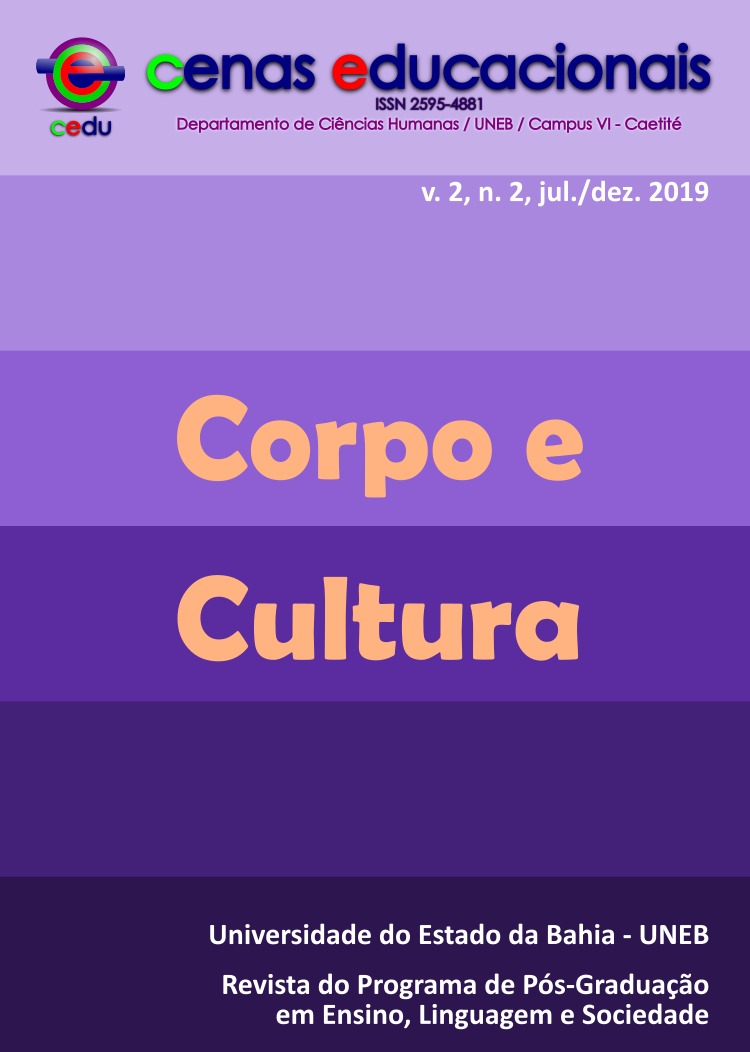DETERMINATION OF THE LEARNING PREFERENCES OF ENGINEERING STUDENTS OF A HIGHER EDUCATION INSTITUTION IN THE SOUTHEAST BAIANO AS THE BASIS FOR NEW TEACHING STRATEGIES
Keywords:
Active Methodologies. Teaching. LearningAbstract
From the Law of Education Guidelines and Bases, Brazil showed significant growth in the number of institutions and higher education courses, especially in Engineering. This work aimed to verify the learning preferences of the students of the Engineering courses of a Southwestern Bahia Higher Education Institution, searching the bases for new teaching strategies. Through an online questionnaire, it was possible to realize that what matters most for students is the teacher's didactics and have a preference for group dynamics and experimentation. The insertion of new ways of learning / teaching, among them the active methodology, is still incipient in the institution.Downloads
References
Alves, M F S; MONTAVANI, K L. Identificação do perfil dos acadêmicos de engenharia como uma medida de combate à evasão. Revista de Ensino de Engenharia, v. 35, n. 2, p. 26-36, 2016.
BARBOSA, E. F.; MOURA, D. G. de; Metodologias ativas de aprendizagem no ensino de engenharia. In: International Conference on Engineering and Technology Education, XIII, 2014, Guimarães, Portugal. Anais... International Council for Engineering and Techonology Education. 2014
BRASIL. Conselho Nacional de Educação. Resolução CNE/CES n° 2/2019. Institui as Diretrizes Curriculares Nacionais do Curso de Graduação em Engenharia. Diário Oficial da União. Brasília, DF. 2019
GEMIGNANI, E.Y.M.Y. Formação de professores e metodologias ativas de ensino aprendizagem: ensinar para a compreensão. Fronteiras da Educação [online], Recife, v. 1, n. 2, 2012
GÓIS, J. L. R.; BARBOSA, F. L. A prova como instrumento incompleto de avaliação da aprendizagem educacional. Revista Científica Facimed, v. 2, n. 2, p. 110-122, 2010
INEP. Instituto Nacional de Estudos e Pesquisas Educacionais Anísio Teixeira. Sinopse da Educação Superior. (2015). Disponível em: httpportal.inep.gov.br/sinopses-estatisticas-da-educacao-superior
LIBÂNEO, J. C. Didática. São Paulo: Cortez, 1994.
LOPES, R. D. C. S. A relação professor aluno e o processo ensino aprendizagem. Dia a dia e educação. 2017. Disponível em: <http://www.diaadiaeducacao.pr.gov.br/portals/pde/arquivos/1534-8.pdf>. Acesso em: 12 Ago. 2019.
MELO, A. de; URBANETZ, S. T. Fundamentos da didática. Curitiba: Ibpex, 2008.
MORIN, E. Os sete saberes necessários à educação do futuro. 3ª ed. São Paulo/Brasília: Cortez/UNESCO; 2001
MORÁN, J. Mudando a educação com metodologias ativas. In: SOUZA, C. A de, MORALES, O E T. Convergências Midiáticas, Educação e Cidadania: aproximações jovens. Coleção Mídias Contemporâneas. Vol. II. PG: Foca Foto-PROEX/UEPG, 2015
OLIVEIRA, V F de; Almeida, N n de; Carvalho, D M de; PEREIRA, F A A. Um estudo sobre a expansão da formação em engenharia no Brasil. Revista de Ensino de Engenharia. Edição especial dos 40 anos. 2013
SILVA, W. A., SARMENTO, A. P., OLIVEIRA, M. H., BEZERRA, J. E., PAULA, H. M., CARMO, K. V., MACHADO, D. R. Avaliação das estratégias de ensino no curso de engenharia civil da Universidade Federal de Goiás – Região Catalão. Revista de Ensino de Engenharia. v. 35, n. 1, p. 11-22. 2016
ZALUSKI, F. P., OLIVEIRA, T. D. Metodologias ativas: uma reflexão teórica sobre o processo de ensino e aprendizagem. In: Congresso Internacional de Tecnologias e Educação e Encontro Nacional de Pesquisadores em Educação a Distância, 2018, São Carlos, São Paulo. Anais... CIET:EnPED:2018 – Educação e Tecnologias: Aprendizagem e construção do conhecimento, 2018
Published
How to Cite
Issue
Section
License
Copyright
The submission of originals to Cenas Educacionais (Educational Scenes - CEDU) implies the transfer, by the authors, of the publication rights. The copyright for the manuscripts published in this journal is the author(s), with CEDU rights over the first publication. Authors(s) may only use the same results in other publications by explicitly indicating CEDU as the means of the original publication.
Creative Commons License
Except where otherwise specified, the terms of a Creative Commons Attribution-ShareAlike 4.0 International License license apply to the material published in this journal, which allows unrestricted use, distribution and reproduction in any medium provided the original publication is correctly cited.






 This work is licensed with a License
This work is licensed with a License 